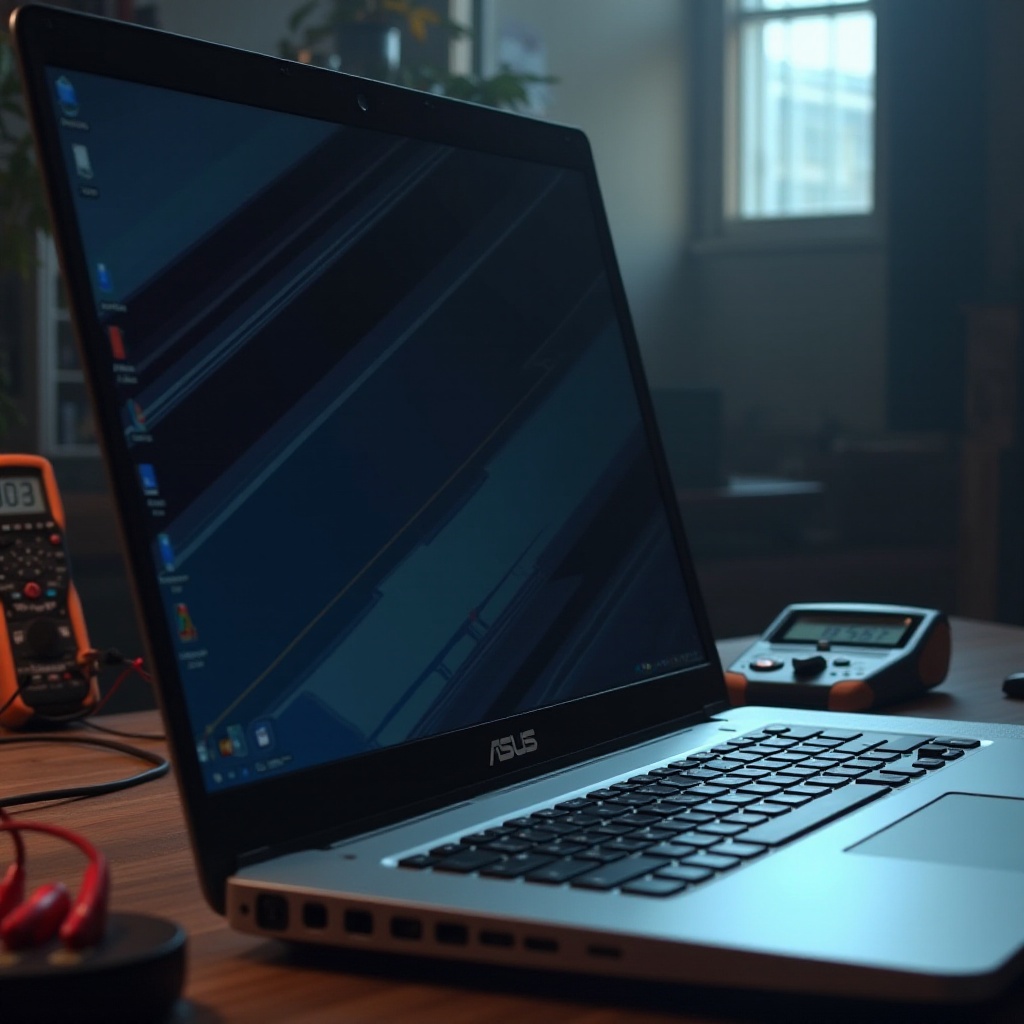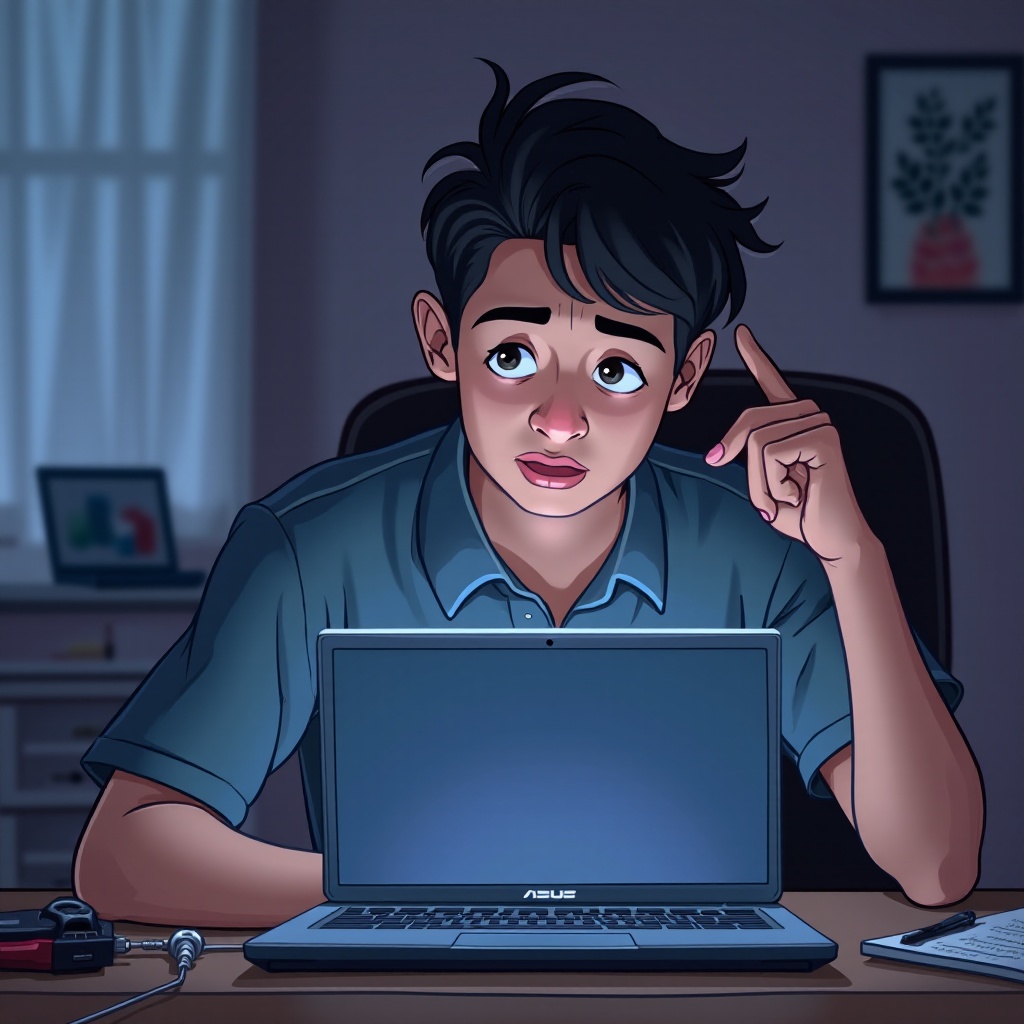
Introduction
Facing the troubling issue of an Asus laptop that won’t power on can severely impact your day-to-day routine, whether for work, study, or leisure. A non-responsive laptop can be both frustrating and concerning, especially if it contains valuable information and tools necessary for productivity. This guide is designed to help Asus users understand potential causes and offer solutions to get their devices back up and running efficiently.
Identifying the factors affecting your laptop’s power functionality can alleviate stress, save time, and potentially reduce costs associated with repair services. By exploring these causes and solutions, you can quickly address the problem and restore your device to its full capability.

Common Reasons and Early Diagnostics
There are several common reasons why an Asus laptop might fail to power on. Things like drained or defective batteries and faulty power adapters play a critical role as they supply the necessary power to your laptop. Hardware malfunctions, such as faulty RAM or hard drive issues, can also impact startup. Software glitches, corrupted BIOS settings, and update conflicts might lead to startup failure. Getting acquainted with these potential causes is the first step toward effective troubleshooting.

Ensuring Proper Power Supply and Connection
Addressing basic power supply and connectivity should be your first step when facing an unresponsive Asus laptop.
Steps to Verify Power Source and Connections
- Power Source Check: Ensure your wall socket is operational. Test it using a different device like a lamp or phone charger.
- Inspecting the Power Adapter: Look out for damages such as frayed cords or adapter problems. If available, test with another compatible Asus charger.
- Securing Connections: Ensure all connections, from the charger to the power port on your laptop, are tight and secure.
Battery Inspection and Management
- Checking Battery Configuration: For models with removable batteries, remove and reinstall the battery correctly.
- Testing with No Battery: Old batteries might no longer hold a charge. Plug in the charger without the battery attached to see if the laptop starts.
Performing a Hard Reset
- Disconnect External Devices: Remove peripheral devices like USB drives or external hard disks.
- Drain Excess Power: Hold down the power button for 15 to 20 seconds to drain any residual charge.
- Re-evaluate Power Supply: Reconnect the charger and attempt a startup.
Completing these preliminary power checks can resolve straightforward issues, allowing for more in-depth exploration if resolution isn’t reached.
Diving Deeper into Hardware Checks
Should basic power solutions prove ineffective, further examination into the laptop’s hardware could be required.
Internal Component Inspection
Carefully opening your laptop (a task for those confident with hardware) could reveal loose internal connections related to components such as the power switch, display, or battery, potentially solving the power issue.
Assessing RAM and Hard Drive Health
- Reseating RAM: By removing and reinserting RAM modules, you can ensure they’re sitting correctly in their slots, potentially resolving issues.
- Examining the Hard Drive: Unusual noises from the hard drive often precede failure. Check its connections if physical access is within your skill set.
Evaluating Display Functionality through External Means
- Using an External Monitor: Connecting to an external display can identify if the problem is the built-in screen.
- Changing Display Modes: Use the relevant function keys to toggle display settings and assess where the issue lies.
These hardware evaluations can help pinpoint where the malfunction occurs and what component needs attention.
Software Solutions and System Recovery
When hardware isn’t the culprit, software difficulties might obstruct startup. A methodical approach is beneficial in these instances.
Accessing and Utilizing Safe Mode
- Safe Mode Entry: Attempt to boot by pressing F8 repeatedly, which allows for Safe Mode access and diagnostics.
- Conduct System Reassessments: Use available recovery tools to address system errors, restoring to a previous update if necessary.
Updating BIOS and Drivers
- BIOS Revision: Navigate to the Asus support site to ascertain if BIOS updates are pending.
- Driver Evaluation: Make sure all drivers are updated and conflict-free within Safe Mode when possible.
Interpreting Startup Beep Codes
Listen closely for beep codes, as these provide insights into hardware problems. Consulting your Asus manual or online resources can provide specific interpretations.
Properly addressing these software concerns can effectively tackle otherwise elusive startup issues.
Knowing When It’s Time for Professional Help
While many can perform the above checks successfully, some issues require professional expertise.
Identifiable Signs for Professional Assistance
- Recurring Failures to Power On: Persistent issues after standard troubleshooting.
- Complex Error Messages or Hardware Malfunctions: Involving intricate components like motherboards.
Finding Certified Repair Options
Utilize the Asus website to discover authorized repair centers, ensuring warranty terms remain intact through official parts and services.
Engaging professionals at the right time can preserve your device and prevent further complications.

Conclusion
Effectively troubleshooting an Asus laptop that won’t power on requires a comprehensive understanding of both hardware and software issues. Following this detailed guide will help address commonly faced problems while clarifying when professional help should be sought. Identifying and solving the root of the problem enables a return to routine with minimal downtime or stress.
Frequently Asked Questions
What should I do if my Asus laptop still won’t turn on after troubleshooting?
Seek professional help to identify complex hardware issues which require expertise beyond basic troubleshooting.
How long should an Asus laptop battery last?
Typically, an Asus laptop battery lasts between 2 to 4 years, depending on usage patterns and maintenance.
Can a virus cause my Asus laptop not to turn on?
Yes, while rare, severe malware can corrupt system files necessary for booting, requiring specialized software solutions or a professional repair.
